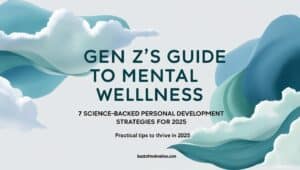Have you ever wondered, how many generations in 100 years does it take to transform society? Whether you’re curious about historical shifts or planning your long-term goals, understanding generational timelines can provide unique insights into cultural evolution, career growth, and personal development. In this article, we explore how many generations are in 100 years, break down the factors influencing generation length, and offer actionable takeaways for motivated individuals ready to harness these insights.
What Defines a Generation?
Before diving into the numbers, it’s important to understand what a generation is. In demographic and sociological terms, a generation is a group of people born around the same time who experience similar social, economic, and cultural influences. Although definitions vary, a generation is commonly estimated to span 20 to 30 years.
- Historical Context:
In the past, shorter life expectancies and faster societal changes often meant shorter generational spans. Today, with advancements in healthcare and longer life expectancies, many demographers use 25 years as a general rule of thumb. - Cultural Influences:
The perception of a generation can change depending on historical events, technological breakthroughs, and shifts in social norms. For instance, the Baby Boomer generation has a distinctly different timeline compared to Gen Z or Millennials.
Calculating Generations Over a Century
So, how many generations in 100 years are there? Let’s break it down:
- Using a 25-Year Generation Span:
- 100 years ÷ 25 years per generation = 4 generations
- Using a 20-Year Generation Span:
- 100 years ÷ 20 years per generation = 5 generations
- Using a 30-Year Generation Span:
- 100 years ÷ 30 years per generation ≈ 3 to 4 generations
Key Takeaway:
The answer depends on the assumed average length of a generation. Most modern analyses tend to favor a 25-year span, suggesting roughly 4 generations in 100 years.
Factors Influencing Generational Length
Understanding the answer to how many generations are in 100 years requires looking at several factors:
1. Life Expectancy and Health
- Advancements in Healthcare: Longer life expectancies can extend the generational span as people delay having children.
- Historical Health Trends: In earlier centuries, shorter life spans meant that generations cycled faster.
2. Cultural and Societal Norms
- Family Planning Trends: Shifts in societal norms around marriage and childbirth impact the average generation length.
- Economic Conditions: Economic stability or instability can influence when people start families.
3. Technological and Educational Factors
- Access to Education: As more individuals pursue higher education, childbearing may be delayed, thus lengthening the generational gap.
- Technological Impact: Rapid changes in technology can create distinct cultural markers that define generations.
For an in-depth analysis of these factors, check out Harvard Business Review for insights on how technology and education shape generational differences.
Real-World Examples and Statistics
Consider these real-world statistics to further understand the concept:
- Average Generation Length:
Studies often estimate an average generation span of 25 years in modern societies.
Source: Statista on Demographic Trends - Historical Shifts:
In pre-industrial societies, generations could be as short as 20 years, while in some modern contexts, a generation might extend to 30 years due to delayed parenthood. - Workforce Trends:
According to Forbes, shifts in generational dynamics significantly impact workplace culture and career progression strategies, highlighting the importance of understanding these timelines in personal and professional growth.
Implications for Personal Development and Career Growth
Knowing how many generations are in 100 years isn’t just a fun fact—it offers a framework for long-term planning. Here’s why it matters:
1. Long-Term Career Planning
- Career Transitions:
Understanding generational shifts can help you anticipate changes in job markets and adapt your career strategy. - Skill Development:
Embrace lifelong learning to stay relevant as generational values evolve.
2. Personal Growth and Legacy Building
- Goal Setting:
Use generational timelines to set long-term personal and professional goals. - Mentorship:
Bridging the gap between generations through mentorship can foster growth and innovation.
Frequently Asked Questions (FAQs)
Q1: What is the standard definition of a generation?
A: A generation is typically defined as a group of people born during the same period, generally spanning 20 to 30 years, influenced by shared historical and cultural experiences.
Q2: How is the average generational span calculated?
A: The average span is calculated by looking at the typical age difference between parents and their children. In modern societies, this average is commonly around 25 years, though it can vary based on cultural and socioeconomic factors.
Q3: Are there exceptions to the typical 25-year generational span?
A: Yes, historical events, cultural norms, and technological advancements can either shorten or lengthen the average generational span. For example, in times of rapid social change, younger generations might emerge more quickly.
Q4: How does increased life expectancy affect generational timelines?
A: Longer life expectancies can delay parenthood, potentially extending the generational span beyond the traditional 25 years, which might result in fewer generations over 100 years.
Q5: What are the practical applications of understanding generational timelines?
A: Knowing generational timelines can help with long-term career planning, personal development, and even in understanding market trends in various industries.
Conclusion
In summary, how many generations in 100 years depends largely on the assumed generational span—typically around 4 generations using a 25-year average. However, variations exist, with possibilities ranging from 3 to 5 generations. By understanding these timelines, you can better plan your career, set meaningful personal goals, and appreciate the evolution of cultural and societal norms.
If you found these insights valuable, be sure to explore more content on generational trends and personal growth at bestofmotivation.com. Stay inspired, plan for the future, and transform challenges into opportunities across every generation
Also, check out our article on Time Management Tips for more actionable advice on maximizing your potential.











